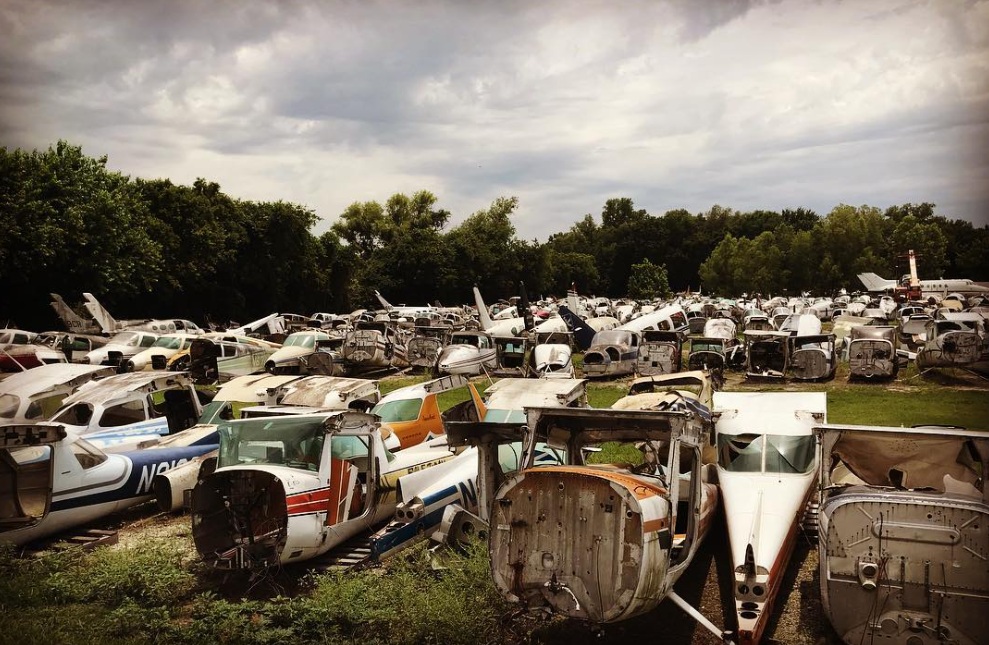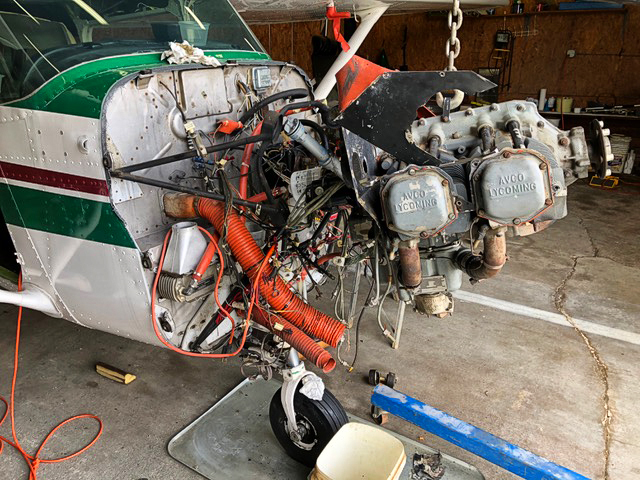The CAA Doesn’t Care When Engines Fail
General aviation in South Africa is facing the biggest crisis to its existence since it started over 100 years ago.
The SACAA has embarked on a campaign to ground all aircraft with piston engines older than 12 years.
In June 2025 the CAA amended its rules (the Civil Aviation Technical Standards (CATS 43.02.05) to give it the discretion to make the manufacturers’ recommendation that piston engines be overhauled every 12 years, compulsory.
And so they did that by removing the wording that created an exemption for this requirement.
The damage being done to the GA fleet is enormous. The CAA’s own figures say that 3874 aircraft will be affected, which is about 20% of the entire certified fleet. Grounding 20% of GA aircraft will force operators and businesses such as AMO’s to close. It will also discourage banks from financing aircraft, because grounded aircraft have little value other than as scrap and so many of their values are now less than what the bank is owed.
In a rare show of unity, the GA community raised a war chest of over R1.6 million to fight the CAA’s campaign through the courts. There are two key issues in the current industry pushback against the CAA’s disastrously ill-advised rules.

Infant Mortality
The first issue is that freshly overhauled engines are more likely to fail than engines that are, for example, 15 years old, with 1,500 hours on them. This claim is often made, but evidence has been scarce. So I asked my favourite guru, Peter Garrison, for his insights from writing accident analyses for over forty years.
Peter consulted the Chinese AI app DeepSeek. He reckons that “DeepSeek is pretty reliable if you aren’t asking for replies that involve judgment.” The results it produced are significant in that it found clear evidence that “there are statistics and studies available on engine failures in GA piston engines, including failures within the first 100 hours after overhaul (often referred to as “infant mortality” failures).
Here are some key findings from various sources:
- A 2011 study by the Australian Transport Safety Bureau (ATSB) found that about 15% of engine failures occurred within the first 100 hours after maintenance or overhaul.
- Some maintenance providers suggest that 5-10% of failures occur in the first 100 hours post-overhaul.
- A 2009 FAA study found that a significant portion of engine failures occur early in the engine’s life, often due to maintenance or installation errors, rather than wear.
(References for these, and many other sources, are available.)
Peter Garrison concludes, “While exact statistics vary, evidence suggests that 5-15% of piston engine failures in GA occur within the first 100 hours after overhaul. So, if we assume that the average time between overhauls is 1,800 hours, then if failures were random, we would expect 100/18 or 5.5% of failures to occur per 100-hour interval. In that case, a 5% infant mortality would be expected and 15% would be high.”
It is of interest to note that the most common causes of early failures are: manufacturing defects, improper break-in, installation errors and maintenance mistakes. Examples of these are: poorly seated valves, incorrect torque on components and contamination during assembly.
Once an engine passes the initial break-in period, failures become less frequent if properly maintained. Most failures in this phase are due to external factors such as fuel starvation, oil issues, or operational errors, rather than wear.
So yes, there is real evidence that engines that have been recently overhauled are more likely to fail than ‘mature engines’.

A Divided Defence?
The other big issue facing the industry’s fight back against the SACAA is an unfortunate split developing in the GA community over the question of whether Recreational Aviation (Part 91) should combine with Commercial Aviation (Part 135) in the legal fight against the 12-year rule. There is an increasingly vocal call for Part 91 to fight its own battles, separate to Part 135.
Recreational aviation fears that, if a judge finds in favour of the CAA against Commercial Aviation, then Recreational Aviation will be caught in that net as well.
Recreational aircraft owners argue that Part 91 must be treated differently to Part 135 as the tolerance of risk is different in that recreational pilots are prepared to assume higher risks than the paying passengers of Part 135 operators.
The trouble is, this undermines the argument that older engines are safer.
Those in favour of splitting recreational aviation from the fight back by commercial operators argue that the CAA is persisting with this damaging rule because its greatest fear is that of liability, and not safety. The strange conclusion then is that counterintuitively, despite its mandate to make aviation safer, the SACAA does not care when engines fail.
In essence, what the SACAA most fears is not any perceived or actual risk of engines failing, but that it will be held responsible for the death or injury of paying passengers if an engine fails, despite the manufacturer having recommended that it be overhauled. The basis for this argument is that when someone buys a ticket under Part 135, that passenger has a right to expect less risk than someone who goes for a flip in his friend’s light aircraft (for no payment).
Initially I was opposed to commercial operators and recreational aviation sdplitting their resources for the fight, for a number of reasons:
- A war chest of R1.6 million has already been raised and it would be difficult for recreational aviation to start again and fund their own campaign from scratch.
- The CAA has been trying to implement the 12-year rule for the past twenty years and it has taken months just to get to a court date (currently 11-12 September 2025). If recreational aviation broke away, it would probably be faced with at least another six months, if not years, before it too could get its day in court.
- As shown in the first part of this discussion, the most dangerous period for engines is shortly after overhaul. Yet if Part 91 argues that it can accept a higher risk than Part 135 (because recreational aviation may not sell seat tickets) then they are tacitly admitting that the CAA has a valid case to try reduce risk by limiting engine age.
While these are valid arguments, they may all be outweighed by the two key reasons why Part 91 should fight its own battle. These are that:
- There is a fear that a court will rule for the CAA against Part 135 because paying passengers can expect a greater level of safety than people going for free flips.
- The CAA makes the rules. In June this year the CAA changed its technical standards (CATS 43.02.05) and as we all know, ‘the rules is the rules’. Therefore there is a worry that a court may decide that the SACAA is just following the rules. And these are rules that were developed with the industry (through CARCOM).
The bottom line is that, if we believe the argument that the CAA’s primary concern is its potential liability from not enforcing the manufacturers’ recommendations, then those who want to break away from the Part 135 campaign have a good case.
The current court date for this matter is over 11 and 12 September 2025. It will require presenting an extremely good argument to a judge who understands aviation to convince him that, even if the argument that older engines are more dangerous is not supported by any evidence, Part 91 has a greater risk tolerance and therefore should be treated differently.
The best outcome is to not only allow Part 91 to run its engines longer than 12 years, but also longer than the manufacturers’ recommended time between overhauls (TBO) in hours. This is what most countries with developed general aviation sectors allow. In the USA, Part 91 can fly its engines beyond the manufacturers’ recommended TBO in hours for as long as they pass inspections such as borescope examinations, compression tests and oil analysis.
These are widely accepted ‘alternative means of compliance’ (AMOC) which can allow engines to be maintained ‘on condition’ and thus save the enormous cost and increased risk of having them overhauled.
So Part 91 has a lot to lose if it is dragged down by Part 135. But for recreational aviation to build up its own war chest and start its own legal battle may take many more months if not years. And general aviation cannot wait that long. Its aircraft will rot on the ground and financiers and insurers will withdraw from aviation. It is unlikely that the industry would ever recover from such a setback.
